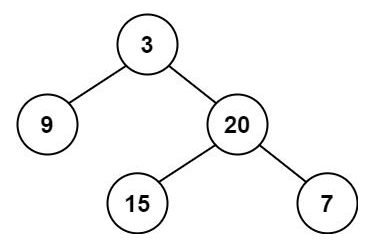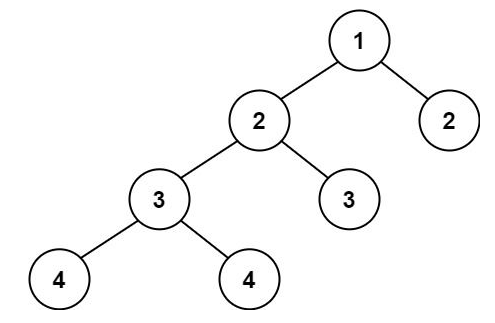110. 平衡二叉树
给定一个二叉树,判断它是否是 平衡二叉树
示例 1:

输入:root = [3,9,20,null,null,15,7] 输出:true
示例 2:

输入:root = [1,2,2,3,3,null,null,4,4] 输出:false
示例 3:
输入:root = [] 输出:true
提示:
- 树中的节点数在范围
[0, 5000]内 -104 <= Node.val <= 104
方法一:自底向上的递归
定义函数
- 如果二叉树
为空,返回 。 - 否则,递归计算左右子树的高度,分别为
和 。如果 或 为 ,或者 和 的差的绝对值大于 ,则返回 ,否则返回 。
那么,如果函数
时间复杂度
java
class Solution {
public boolean isBalanced(TreeNode root) {
return height(root) >= 0;
}
private int height(TreeNode root) {
if (root == null) {
return 0;
}
int l = height(root.left);
int r = height(root.right);
if (l == -1 || r == -1 || Math.abs(l - r) > 1) {
return -1;
}
return 1 + Math.max(l, r);
}
}cpp
class Solution {
public:
bool isBalanced(TreeNode* root) {
function<int(TreeNode*)> height = [&](TreeNode* root) {
if (!root) {
return 0;
}
int l = height(root->left);
int r = height(root->right);
if (l == -1 || r == -1 || abs(l - r) > 1) {
return -1;
}
return 1 + max(l, r);
};
return height(root) >= 0;
}
};ts
function isBalanced(root: TreeNode | null): boolean {
const dfs = (root: TreeNode | null) => {
if (root == null) {
return 0;
}
const left = dfs(root.left);
const right = dfs(root.right);
if (left === -1 || right === -1 || Math.abs(left - right) > 1) {
return -1;
}
return 1 + Math.max(left, right);
};
return dfs(root) > -1;
}python
class Solution:
def isBalanced(self, root: Optional[TreeNode]) -> bool:
def height(root):
if root is None:
return 0
l, r = height(root.left), height(root.right)
if l == -1 or r == -1 or abs(l - r) > 1:
return -1
return 1 + max(l, r)
return height(root) >= 0